It’s been almost 120 years since the word gene was coined. Today, researchers are well on their way to manipulating genes to treat diseases. With only about 400 approved treatments for more than 7,000 rare diseases — 80% of which are caused by gene mutations — scientific advances are enabling gene manipulation for both prevention and 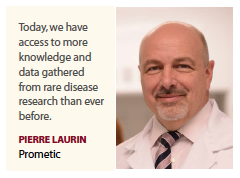 real cures for patients and caregivers in the rare disease arena. Currently, there are more than 150 gene therapy Phase I, II and III clinical trials in progress.
real cures for patients and caregivers in the rare disease arena. Currently, there are more than 150 gene therapy Phase I, II and III clinical trials in progress.
Technologies are being developed around precision medicine and identifying genetic differences — because most rare diseases have a definable or suspected genetic role. And there are tens of thousands of known mutations that can lead to a genetic disorder.
WIRB-Copernicus Group’s Senior Scientific Advisor, Gene Therapy, Dr. Daniel Kavanagh says some of those innovative technologies include next-generation sequencing, high throughput sequencing, and large-scale DNA sequencing of populations. Efforts are being made to use these technologies to link a syndrome or symptom to a particular genetic marker. “There’s also a huge effort to develop artificial intelligence and computational approaches to bridge the causal relationships between genetic information and symptomatic information in these populations, which will point the way to druggable targets," he adds. “Once a molecular pathway that connects the symptom and the genetic information has been discovered, intensive high throughput screening methods can be used to identify druggable targets and find the best drug candidates."
Amy Graham, client engagement officer, at Ogilvy Health agrees that the introduction of next-generation sequencing technologies (also known as NGS) and their application on human populations are changing treatment paradigms. “NGS has led to the identification of a large catalogue of rare and common diseases," she says. “Advances in sequencing have made it faster and cheaper to find associations between genetic mutations and diseases, leading to better drug discovery — the ability to identify novel 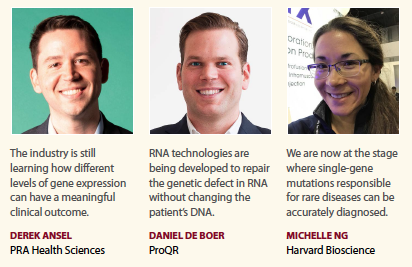 compounds or re-use existing compounds, increase drug efficacy and reduce adverse reactions, and ultimately facilitate personalized therapies. In the years to come, we expect to see newly developed and marketed compounds aided using NGS techniques."
compounds or re-use existing compounds, increase drug efficacy and reduce adverse reactions, and ultimately facilitate personalized therapies. In the years to come, we expect to see newly developed and marketed compounds aided using NGS techniques."
Another area of attention is biomarkers, according to Ms. Graham. “Management of rare diseases is often limited by delayed diagnosis and lack of effective treatment," she says.
“The emerging concept of personalized medicine allows for early screening, diagnosis, and individualized treatment of human diseases. In this context, the discovery of biomarkers in rare diseases will allow for more timely prevention and effective treatment. Since 80% of rare diseases are genetic in origin, identification of new genes and causative mutations become valuable biomarkers. Biomarker discovery and their use in diagnosis in rare diseases is a major pillar of research."
CRISPR is one of the hottest and most controversial technologies at the moment. Even with some of its limitations, CRISPR along with other gene editing techniques such as Talen and zinc finger nucleases provide researchers with a tool to easily target and modify a specific region of a cell’s genome. “CRISPR has become the preferred system for genome engineering, as it is a simple and easy-to-use way to correct mutations with reduced off-target activity," says Michelle Ng, global product manager at Harvard Bioscience. “The CRISPR/Cas9 gene editing system allows scientists to knock out, edit, repress, interfere with, or activate a gene. This is a revolutionary method allowing rare disease research to proceed faster than ever before."
Also with the help of CRISPR, rare disease researchers can permanently modify genes in living cells and possibly correct mutations at precise locations in the human genome to treat diseases caused by a single gene defect. “Human gene therapy clinical trials, funded by the NIH are using the CRISPR/Cas9-mediated gene editing of T cells to treat a variety 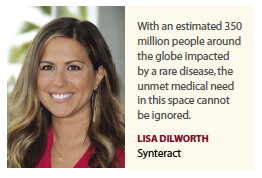 of rare diseases, including cystic fibrosis, retinitis pigmentosa, multiple myelomas, and other diseases," Ms. Ng says. “To deliver these CRISPR constructs, scientists have used electroporation devices, such as the ECM 830 to incorporate new genetic instructions into T cells."
of rare diseases, including cystic fibrosis, retinitis pigmentosa, multiple myelomas, and other diseases," Ms. Ng says. “To deliver these CRISPR constructs, scientists have used electroporation devices, such as the ECM 830 to incorporate new genetic instructions into T cells."
Another CRISPR application is to genetically manipulate cells at the laboratory bench to create a model system. Sam Kulkarni, CEO of CRISPR Therapeutics, explains that CRISPR is essentially a pair of molecular scissors that can cut DNA, but the scissors are attached to a bar code that tells researchers where to cut. When that cut is made on the DNA, the body’s own repair mechanisms can either disrupt genes, correct genes, insert genes, or regulate genes.
“For all these years, pharma’s efforts have been generally targeted toward the proteins that ultimately affect or cause disease, but not at the root cause of it," he says. “CRISPR gives us the ability to treat or even potentially cure diseases by getting at the root cause of diseases, which are typically genetic aberrations or the genes that might be involved in causing the disease. The power of the technology is to use these molecular scissors at the genetic level to make manipulations that can play a fundamental role in how we treat disease."
According to Dr. Kulkarni, there are thousands of rare diseases to which CRISPR can be applied. “It’s hard to predict where the near-term impact is likely to be, but if we look at the portfolios of the various CRISPR companies, we can make a guess as to where the technology might have the biggest impact."
Despite some of CRISPR’s limitations, including off-target mutations, delivery, and toxicity, Dr. Kavanagh says CRISPR will impact rare disease research by enabling high throughput screening of drug targets in the laboratory. “At the second level, CRISPR can be used to develop gene transfer products to create cells ex-vivo for implantation into 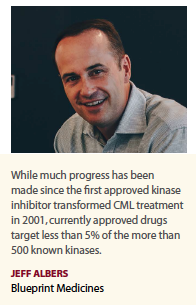 subjects," he says. “It can also potentially be used for gene transfer in vivo to modify cells by injection of a vector or a nano-particle directly into human tissue to try to treat disease that way. In the distant future, it will probably be used to modify germ line cells to prevent disease for conception. But that is extremely controversial."
subjects," he says. “It can also potentially be used for gene transfer in vivo to modify cells by injection of a vector or a nano-particle directly into human tissue to try to treat disease that way. In the distant future, it will probably be used to modify germ line cells to prevent disease for conception. But that is extremely controversial."
With 7,000 rare diseases, Dr. Kavanagh says, there are going to be 7,000 genetic pathways involved, and each one is going to have interesting, targetable factors. “There will be highly specific technology that will need to be developed for certain rare diseases," he adds.
In recent years, research into rare diseases has surged, which is attributable to a number of factors, including the ability of genomic testing to identify disease causing mutations, which allows for the development of targeted treatments that may address the root cause of the disease rather than merely managing the symptoms.
ArQule is using genetic data to develop targeted therapeutics for rare overgrowth diseases, including Proteus syndrome and PROS. These diseases currently have no approved treatments and cause uncontrolled growth across multiple parts of the body that lead to disfigurement, disability, and early death.
“Our drug development program is based on genomic studies that identified function mutations, which disrupt the AKT/PIK3CA pathway and thereby cause the uncontrolled tissue, skeletal, and other growth seen in these diseases," says Brian Schwartz, M.D., chief medical officer, ArQule.
Another technology being explored in the rare disease space is adeno-associated viruses (AAV), which is the focus of RegenxBio’s research efforts.
“Over the past 15 years, it’s been discovered that adeno-associated viruses come in many different flavors in nature," explains Olivier Danos Ph.D., chief scientific officer at 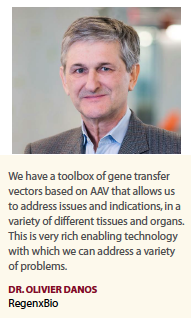 RegenxBio. “Today, we have a toolbox of gene transfer vectors based on AAV that allows us to address issues, indications, in a variety of different tissues and organs. This is a very rich enabling technology with which we can address a variety of problems."
RegenxBio. “Today, we have a toolbox of gene transfer vectors based on AAV that allows us to address issues, indications, in a variety of different tissues and organs. This is a very rich enabling technology with which we can address a variety of problems."
RegenxBio was one of the first companies to use the AAV technology in patients.
“Gene therapy is just the latest modality in biopharmaceutical development," Dr. Danos says. “There are some very interesting small molecules also being developed for some rare diseases, and there are interesting antibodies and recombinant proteins." In some cases, gene therapy will be the winner, he adds, noting it will not replace other areas of development. Rather gene therapy will allow companies to do different things and to pursue different therapeutic avenues.
He believes in a year or so, there will be an acceleration of the number of gene therapy products that reach the market. “Today, there are five or six; in a year from now we may have double this number," Dr. Danos says. “We are not looking at a bubble; this is a technology that is taking off."
In the small molecule space, one company that is making its mark is IntraBio, which is a pioneer in discovering and developing small molecule drugs that modulate lysosomal function and intracellular calcium signaling.
“The method of action is very simple," says Professor Mallory Factor, CEO of IntraBio. “We discovered an ester of an amino acid, the L-form, that crosses the blood-brain barrier and normalizes neuronal membrane potential."
IntraBio is focusing on a number of rare diseases, and Professor. Factor says the response in terms of efficacy has been solid. IntraBio is developing a number of small-molecule drug candidates that have broad applicability to rare and common neurological disorders, genetic, and inflammatory diseases. The company’s current lead drug candidate, IB1001, is initially being developed to treat three rare, genetic diseases where there are extremely high unmet medical needs: Niemann-Pick disease type C, Tay-Sachs Disease, and inherited cerebellar ataxias.
“Innovations in the rare disease field are bringing benefits to patients who have absolutely no options," Dr. Danos says. “We’re not talking about incremental benefits; this is night and day, which is driving a lot of excitement. Patients are pushing for innovations; they are applying a lot of pressure at every level from the scientists to the companies to the regulators to the government to the payers."
Today, we have access to more knowledge and data gathered from rare disease research than ever before, says Pierre Laurin, president and CEO of Prometic Life Sciences.
“The research on rare disease treatments is facilitating better understanding of larger indications, which in return, offers another incentive for biopharmaceutical companies," he says. “For example, our studies of idiopathic pulmonary fibrosis and Alström syndrome, an ultra-rare condition and a severe form of fibrosis, have helped us better understand multiple forms of broader fibrotic indications. And that is why we are motivated to do what we do — to provide treatment options for rare disease patients and eventually build upon that knowledge to address the greater unmet medical needs for broader patient populations."
Another area of innovation is RNA therapy. Unlike gene therapy, which provides new DNA to cells, RNA therapy modifies or provides ribonucleic acid (RNA) to patients’ cells. 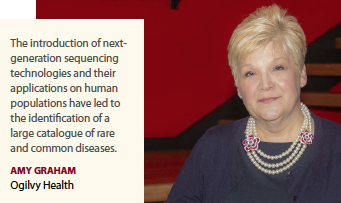 New advancements in RNA therapy are poised to address some of the limitations associated with gene-editing technologies. Some experts say RNA therapy now has the potential to treat a wide variety of diseases, including cardiovascular disease, hemophilia, and cancer.
New advancements in RNA therapy are poised to address some of the limitations associated with gene-editing technologies. Some experts say RNA therapy now has the potential to treat a wide variety of diseases, including cardiovascular disease, hemophilia, and cancer.
“RNA technologies are being developed to repair the genetic defect in RNA without changing the patient’s DNA," explains Daniel de Boer, CEO of ProQR. “RNA therapy is ahead of CRISPR because the molecules are small and do not need a vector for delivery.
By using RNA technology, we also avoid many of the safety concerns that currently surround CRISPR, including undue toxicity or off-target treatment."
Blueprint Medicines is taking a different approach to address rare diseases under a singular focus: improving the way kinase medicines are developed. Mutated or overexpressed kinases are primary drivers of disease in certain rare conditions or subsets of patients with cancer. “While much progress has been made since the first approved kinase inhibitor transformed CML treatment in 2001, currently approved drugs target less than 5% of the more than 500 known kinases," says Jeff Albers, CEO of Blueprint Medicines. “In addition, the function of most kinases remains unknown. Compared with first-generation kinase inhibitors, which are nonselective, we are focused on designing potent and selective medicines that target kinase drivers of disease in rare, genetically defined populations."
To address these opportunities, Blueprint Medicines built from scratch a diverse library of compounds and measured each one’s potency and selectivity against each kinase. “Our research programs also start with a biological insight for how a particular kinase drives disease," Mr. Albers says. “Combining this scientific expertise with our library of diverse chemical matter allows us to rapidly develop highly selective inhibitors against kinases of interest. Selective inhibitors offer the potential for improved potency, less off-target toxicity and high probabilities of clinical success."
Since Blueprint Medicines’ first clinical trial participant was treated several years ago, this approach has helped the company demonstrate proof of concept across five genetically defined, rare patient populations.
Challenges Beyond the Technology
Precision therapeutic options are exciting but not without their challenges.
Operationalizing a trial with an advanced therapeutic requires robust regulatory planning, specialized vendors and equipment, multiple vendors, and most importantly, brave and dedicated patients. “Of particular importance on these trials is ensuring that we reduce the burden of clinical trial participation not only during the interventional trial but also during the potential long-term follow-up trial," says Lisa Dilworth, VP, rare and orphan diseases, Synteract. “Keeping track of patients, especially pediatric patients, for 15 years post-treatment and ensuring they are engaged and active participants in the clinical trial process for such an extended amount of time requires the use of innovative approaches such as virtual trial capabilities to continue collecting critical safety and efficacy data. Sponsors and CROs will need to continue to evolve and engage key  stakeholders and leverage technology — apps, devices, social media — to facilitate successful clinical trials."
stakeholders and leverage technology — apps, devices, social media — to facilitate successful clinical trials."
In addition, experts say high R&D and manufacturing costs can lead to high costs for insurers and patients; inconvenient routes of administration can prove challenging; and the technical expertise required to deliver some of these treatments can be daunting.
“Yet, for families affected by rare diseases, these advancements are nothing short of a miracle, and with the right amount of courage, drive, and belief, we can all work to overcome these hurdles and ensure that everyone associated with a rare disease can look to the future with the hope that someday their condition may be conquered," says Christopher Tobias, Ph.D., president of Dudnyk.
“Being an eternal optimist, with time I believe the science will advance to answer the CRISPR challenges," Ms. Graham says. “Much like the early challenges that faced immune and gene therapy, research and hard work will pay off and the full potential of this ground-breaking technology will be realized and will be used far into the future."
Rare Disease Research Drivers
Dr. Tobias, who began working in the field of gene therapy almost two decades ago, finds it absolutely incredible how far the scientific understanding of molecular medicine has come. “The ability to locate, harness, and control levels of innate molecular machinery to target and treat diseases is the most critical factor in driving rare disease research," he says.
As an active observer of the technology innovations happening, he says some of the most ground-breaking therapeutic approaches currently being applied and realized in the rare disease space include: exon skipping at Sarepta Therapeutics; stop codon read-through technologies being developed at PTC Therapeutics; gene therapy programs at Spark Therapeutics and PTC Therapeutics; antisense oligonucleotide therapy at Biogen; RNA interference technology at Alnylam; and CRISPR gene editing at CRISPR Therapeutics.
“The impact of these technologies in treating rare diseases is astounding," Dr. Tobias says. “Such technologies are expanding the frontier of medicine into areas once not believed to be accessible, for example crossing the blood-brain barrier, invading non-dividing cells in the CNS, and correcting gene mutations. They are slowing, halting, and sometimes even reversing disease progression."
Ms. Dilworth says the reason for the large surge in rare disease drug development activity over the last few years is multifactorial, including changes in legislation, increased financial incentives for drug developers, advocacy, and scientific advances in both diagnostic and treatment methods. “With an estimated 350 million people around the globe impacted by a rare disease, the unmet medical need in this space cannot be ignored," she says. “However, it’s also important to remember that by researching rare diseases, we are also learning more and more about complex molecular pathways that are at play in prevalent diseases as well."
One of the most innovative and truly patient-centric areas in the rare disease space centers around improving the diagnostic odyssey of patients. “With so many rare diseases being genetic and affecting children, it is critical that we remember the first step to finding and caring for patients is to facilitate a timely, accurate, and accessible diagnosis," Ms. Dilworth says. “For me, this is the true meaning of the buzz phrase patient-centric. For example, many genetic diseases are not on the Recommended Uniform Screening Panel also known as RUSP, which means families go through a heart-breaking process of misdiagnosis and delayed treatment options as they seek to name the disease ailing their child."
Traditionally, pharmaceutical companies were not always interested in developing therapies for diseases that did not affect large patient populations. To incentivize drug developers, the FDA introduced the Orphan Drug Act, which gave companies with approved orphan drugs seven-year market exclusivity and the ability to claim a tax credit from conducting clinical trials. “Successful passage of the legislation in 1983 put orphan diseases into the forefront of drug development," says Derek Ansel, clinical strategy lead, Center for Rare Diseases, PRA Health Sciences.
“Before the Orphan Drug Act, only a handful of drugs were approved for orphan diseases; now 25 years later, almost 250 drugs have been approved to treat these diseases," he says. “The FDA continues to give drug developers incentives to research orphan disease and now offers a specialized designation and expedited programs to do so."
Mr. Ansel says since gene therapy and editing are still relatively new compared with other medical breakthroughs, such as antibiotics, the industry is still learning how different levels of gene expression can have a meaningful clinical outcome. “Using hemophilia as an example, even a small change in factor levels can significantly reduce the number of spontaneous bleeds and potentially allow patients to stop their frequent dosing of factor replacement," he says. “As with any medical breakthrough, sufficient long-term follow-up will be required of patients receiving any cell or gene therapy. The FDA requires a 15-year follow-up for any patient receiving any genome integrating gene therapy because the safety profile is not clear. Although mouse models might be promising, there are many unknowns with gene editing when injected into humans."
There have been tremendous efforts by researchers to diagnose, treat, and even prevent a variety of rare diseases. Our experts say much more remains to be done because there are no treatments for the vast majority of these diseases. “Certain government institutions — such as the Office of Rare Diseases Research at the National Institutes of Health, and the Food and Drug Administration — are providing incentives for drug companies to develop treatments for rare diseases," Ms. Ng says. “In addition, organizations such as the International Rare Diseases Research Consortium — IRDiRC — are providing a platform for research groups and foundations to work together on the diagnosis and treatment of rare diseases. As of 2017, the IRDiRC consortium has helped facilitate the development of about 200 new therapies for rare diseases."
Collaborations between pharmaceutical companies, academic institutions, and patient advocacy groups for the furthering of rare disease drug research and development are other drivers of rare disease research, says Stu Peltz, Ph.D., CEO of PTC Therapeutics. “PTC has a partnership with Roche and the SMA Foundation, as well as a collaboration with Akcea Therapeutics, which have driven innovation in treatments for rare diseases," he says.
The expanded role and outreach activities of patient advocacy groups have boosted public awareness, increasing requests from patients and their families for new treatments and driving the scientific industry to focus on these orphan disorders.
“This increase in awareness has accelerated public recognition that rare diseases represent a global public health concern, encouraging the National Institutes of Health to expand its funding in this space," Dr. Peltz says. “We appreciate this public awareness as we continue to develop Translarna, an orally administered small-molecule compound for the treatment of patients with genetic disorders due to a nonsense mutation."
Patients and caregivers themselves — with the help of social media — are driving an 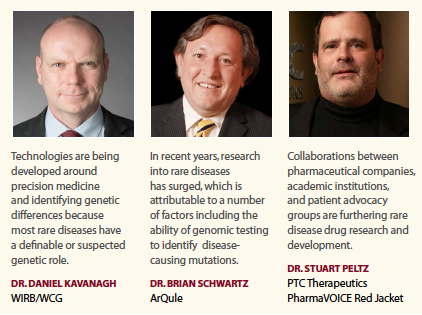 increase in rare disease research, says Monica St Claire, lead, insights products, at Inspire.
increase in rare disease research, says Monica St Claire, lead, insights products, at Inspire.
“The overwhelming adoption and expansion of social media over the last decade has revolutionized patient and disease advocacy," she says. “Rare disease patients and caregivers can now find each each other, find resources, and be a part of a larger, public and coordinated advocacy effort, regardless of geography, demographics, or other factors that would have otherwise been limiting. Armed with a hashtag, in seconds, a rare disease patient or caregiver can be a part of a coordinated, public campaign to bring attention to their condition and affect the perception and discussion of what healthcare means and what healthcare includes. It’s grassroots, with a digital twist."
Ron Cooper, president and CEO, Albireo Pharma, concurs that the rise in rare disease research can be attributed to patient advocacy groups and the technology to amplify their voices. “No one pushes harder for rare disease treatments than a person — or the parent of a person — suffering from that disease," he says. “The possibility of treatments and the support of biopharma has helped rare disease communities come together. This, in turn, has increased awareness and understanding. Patients and companies are working together, driving innovation in many ways. Working effectively with a rare disease community calls for building closer relationships with patients and families, which gives you a more intimate understanding of their needs. We draw on both their experience and their passion."
For example, progressive familial intrahepatic cholestasis (PFIC) is a rare genetic disorder that is estimated to affect one in every 50,000 to 100,000 children born worldwide and causes progressive, life-threatening liver disease. “To help the treatment community better understand this disease, we supported a consortium of researchers who have joined together to illuminate the natural history of PFIC," Mr. Cooper says.
“These insights would have taken individual researchers and organizations decades to develop. This kind of collaboration between industry and the treatment community benefits everyone involved with the mutual goal of improving care for people affected by the disease."(PV)
~~~~~~~~~~~~~~~~~~~~~~~~~
Innovations in the Pipeline
ArQule
ArQule’s pipeline of product candidates is directed toward molecular targets and biological processes with demonstrated roles in the development of both human cancers and rare, non-oncology diseases. All of these programs are being developed in targeted, biomarker-defined patient populations. By seeking out subgroups of patients who are most likely to respond to ArQule’s drugs, the company intends to identify small, often orphan, indications that allow for focused and efficient development. At the same time, in addition to pursuing these potentially fast-to-market strategies, the company is also pursing development in other indications that could allow us to expand the utility of the drugs if approved.
Through a combination of biophysical and biochemical screens against many kinases, ArQule has identified several chemical series that have advanced through lead optimization against targets such as BTK, mutant BTK, TAK1, ACK1, and other targets. The company has also identified chemical series that have advanced through the hit-to-lead stage for targets such as S6K, CDK8, and TNIK.
Blueprint Medicines
Blueprint Medicines is rapidly advancing a deep pipeline of potent and selective kinase inhibitors for genomically defined subsets of patients with cancer and other debilitating diseases driven by the abnormal activation of kinases. By identifying patients most likely to respond to therapies, the company believes it can increase the efficiency of drug development and the likelihood of success, delivering transformative medicines for patients who currently lack effective treatments.
Since starting operations in 2011, it has advanced two lead drug candidates, avapritinib and BLU-554, into three Phase I clinical trials and have multiple discovery-stage programs in its pipeline. Avapritinib is in Phase III trials for unresectable, treatment-resistant gastrointestinal stromal tumors and in Phase I for advanced systemic mastocytosis. The company’s Blue-554 is in Phase I for advanced hepatocellular carcinoma.
CRISPR Therapeutics
CRISPR Therapeutics has initiated programs in four primary areas: ex vivo programs involving gene editing of hematopoietic cells; ex vivo programs in immuno-oncology; in vivo programs targeting the liver; and additional in vivo programs targeting other organ systems, such as muscle and lung.
The company’s lead program CTX001 is targeted toward sickle cell disease and beta-thalassemia. Both of these disease are on the high end of the rare disease spectrum.
Patients with sickle cell live through pain and crises all their lives, not to mention early morbidity because of stroke and other factors associated with the disease. Thalassemia, similarly, is a condition that causes a high level of anemia, patients ultimately suffer from organ damage and lower life expectancy as well.
IntraBio
IntraBio is developing a number of small-molecule drug candidates that have broad applicability to rare and common neurological disorders, genetic, and inflammatory diseases. Its current lead drug candidate, IB1001, is initially being developed to treat three rare, genetic diseases where there are extremely high unmet medical needs: Niemann-Pick disease type C, Tay-Sachs Disease, and Inherited cerebellar ataxias.
Prometic Life Sciences
Prometic’s small molecule therapeutics segment has a pipeline of product candidates leveraging the discovery of two receptors involved in the regulation of the healing process. PBI-4050, the company’s small molecules lead drug candidate, has demonstrated excellent safety, tolerability and efficacy profiles in a large number of animal models of fibrosis affecting different organs, including the lung, liver, heart, kidney, and pancreas. The effects of PBI-4050 demonstrated in animal models have been replicated in Phase II clinical studies in IPF, in metabolic syndrome with type 2 diabetes and in Alström syndrome. PBI-4050 is entering pivotal placebo-controlled Phase III clinical trials for the treatment of IPF.
The plasma-derived therapeutics segment enables the development of its pipeline of biopharmaceutical candidates. This is achieved by leveraging the company’s proprietary affinity technology, which enables a highly efficient extraction and purification process of therapeutic proteins from human plasma. The corporation’s primary focus is to develop plasma-derived therapeutics targeting unmet medical conditions and rare diseases in both established and emerging markets.
ProQR
ProQR’s pipeline of novel medicines focuses on diseases that are very severe or life threatening, and have limited treatment options, including ophthalmology, dystrophic epidermolysis bullosa, and cystic fibrosis. All of the medicines being developed are RNA therapies and target the underlying cause in the diseases. The company’s lead product is QR-110 for Leber’s congenital amaurosis 10 (LCA10), a genetic eye disorder and the leading genetic cause of childhood blindness. There is no approved treatment. A substantive overall improvement in vision in the majority of patients was observed in an ongoing clinical trial of QR-110, a potentially life-changing therapy for people living with LCA10 due to the p.Cys998X mutation in the CEP290 gene.
RegenxBio
RegenxBio’s gene therapy product candidates are designed to deliver genes to cells to address genetic defects or to enable cells in the body to produce therapeutic proteins that are intended to impact disease. Through a single administration, the company’s product candidates are designed to provide long-lasting effects, potentially significantly altering the course of disease and delivering improved patient outcomes.
RegenxBio is currently developing gene therapy product candidates for the treatment of retinal, metabolic, and neurodegenerative diseases. All product candidates use AAV viral vectors from its proprietary gene delivery platform, the NAV Technology Platform.
The company’s most advanced program addresses age-related macular degeneration (AMD). RGX-314 is being developed as a novel, one-time subretinal treatment for wet AMD that includes the NAV AAV8 vector containing a gene encoding for a monoclonal antibody fragment. The expressed protein is designed to neutralize vascular endothelial growth factor (VEGF) activity, modifying the pathway for formation of new leaky blood vessels and retinal fluid accumulation.
PTC Therapeutics
PTC is focused on the discovery, development, and commercialization of clinically differentiated medicines that provide benefits to patients with rare disorders. Founded 20 years ago, PTC Therapeutics has successfully launched two rare disorder products.
Translarna (ataluren) has been approved in the European Union for ambulatory patients 2 years old and older with Duchenne muscular dystrophy resulting from a nonsense mutation in the dystrophin gene. Emflaza (deflazacort) is approved in the United States for the treatment of Duchenne muscular dystrophy in patients 5 years of age and older.
The company’s gene therapy program addresses patients suffering from rare diseases such as AADC Deficiency, Friedreich Ataxia, and Angelman Syndrome. And PTC’s pre-mRNA splicing platform is being applied to develop treatments for rare diseases such as SMA and Huntington’s Disease, among others, with marked success.


















